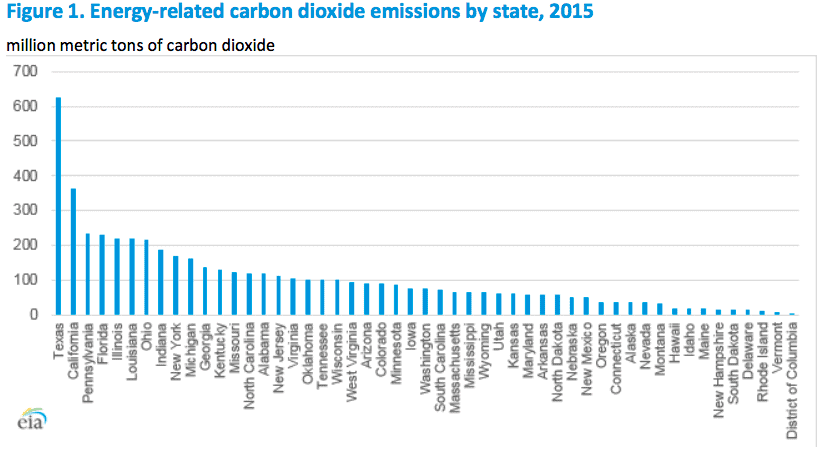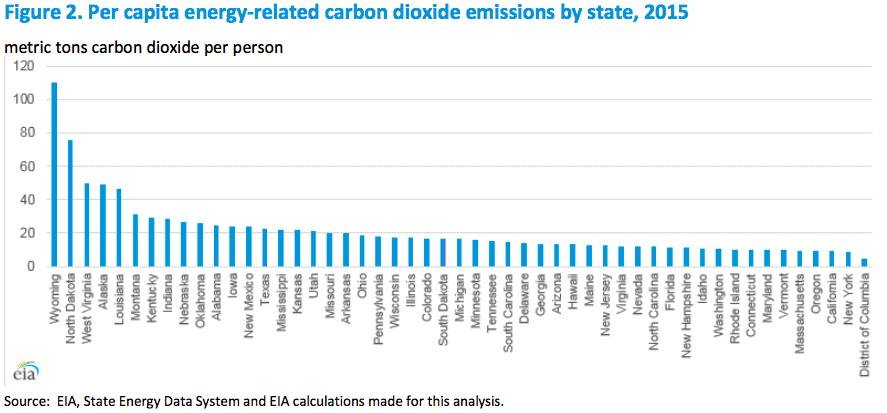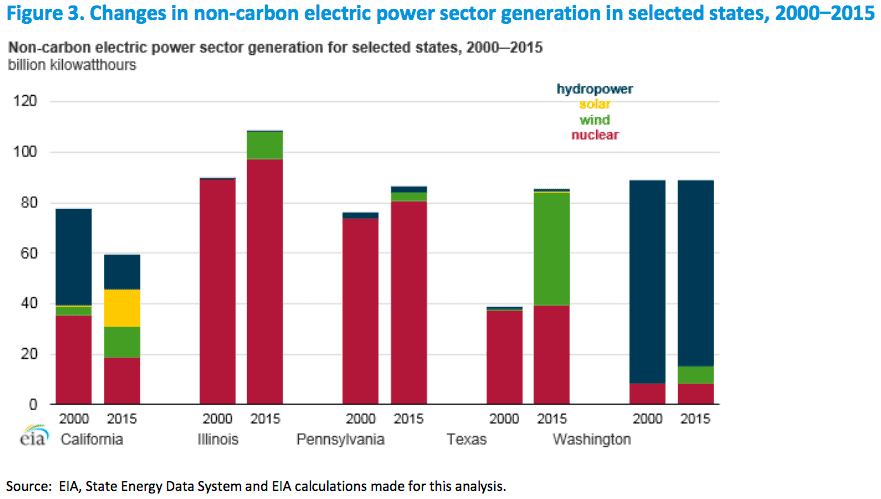The US Energy Information Agency (EIA) has released a comprehensive report about the carbon dioxide in the United States. The state-by-state information reveals that CO2 emissions dropped in 41 states, with Maine taking the crown. The bad news is that in the 9 other states, emissions actually increased. Texas is still, by far, the largest overall emitter.

The data is based on the 2000 – 2015 period. Things have sure changed in the past three years, but this 15-year window can certainly reveal quite a lot
When looking at these figures, it’s important to keep in mind the geographical context. For instance, you’d expect colder states which require more heating to have more associated emissions. Also, larger states where commutes are longer are also expected to use more gas and therefore emit more CO2. For instance, while Texas was the largest emitter overall, it has lower per-capita emissions.
The EIA also noted that New York had the lowest per-capita carbon emissions of the 50 states. New York can get quite cold, but because it’s so densely populated, it requires less energy for heating (closely-spaced apartments tend to be much energy-efficient), and requires less fuel for transportation. The state’s economic profile also makes a big difference.
“The New York economy is oriented toward low energy consuming activities such as financial markets,” the EIA wrote. “For example, New York accounted for about 6 percent of the US population in 2015, but consumed only 1 percent of the country’s industrial energy.”

Kansas also deserves a special mention. Although it increased its population by 200,000, it cut emissions by 17.2 percent, largely due to the state embracing wind energy (wind in Kansas has grown from less than 1 percent to about 24 percent, becoming the second largest energy source in the state).
The wider, nationwide figures clearly indicate how renewable sources of energy have become cheaper and cheaper. While hydro and nuclear were virtually the only low-carbon energy sources in 2000, in 2015, things changed significantly and in the meantime, renewable energy has gotten even cheaper. The significant drop in renewable energy costs led to record global boost, and the US is no exception (despite the best efforts of the current administration).

However, this also suggests that the decrease might not carry on in the future. Nuclear and hydro plants are getting older and some are already being retired. Solar and wind power continue to grow, but with a governance that encourages coal consumption over cleaner, renewable sources, progress will come much slower. It remains to be seen whether the increase in wind and solar will be able to offset the retirement of older plants. In 2015, while they increased significantly, they were still unable to offset the retirement of a nuclear power plant.






